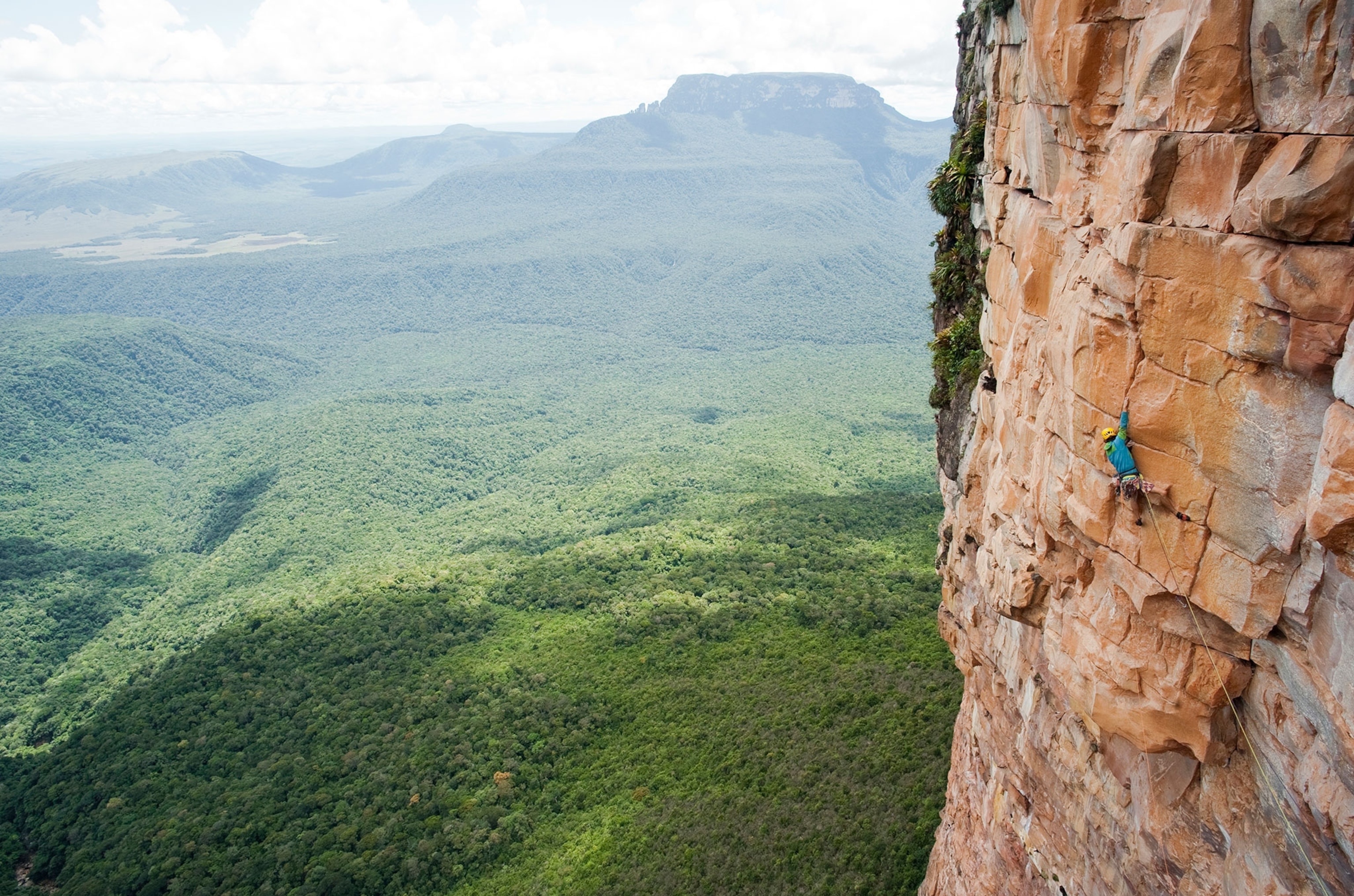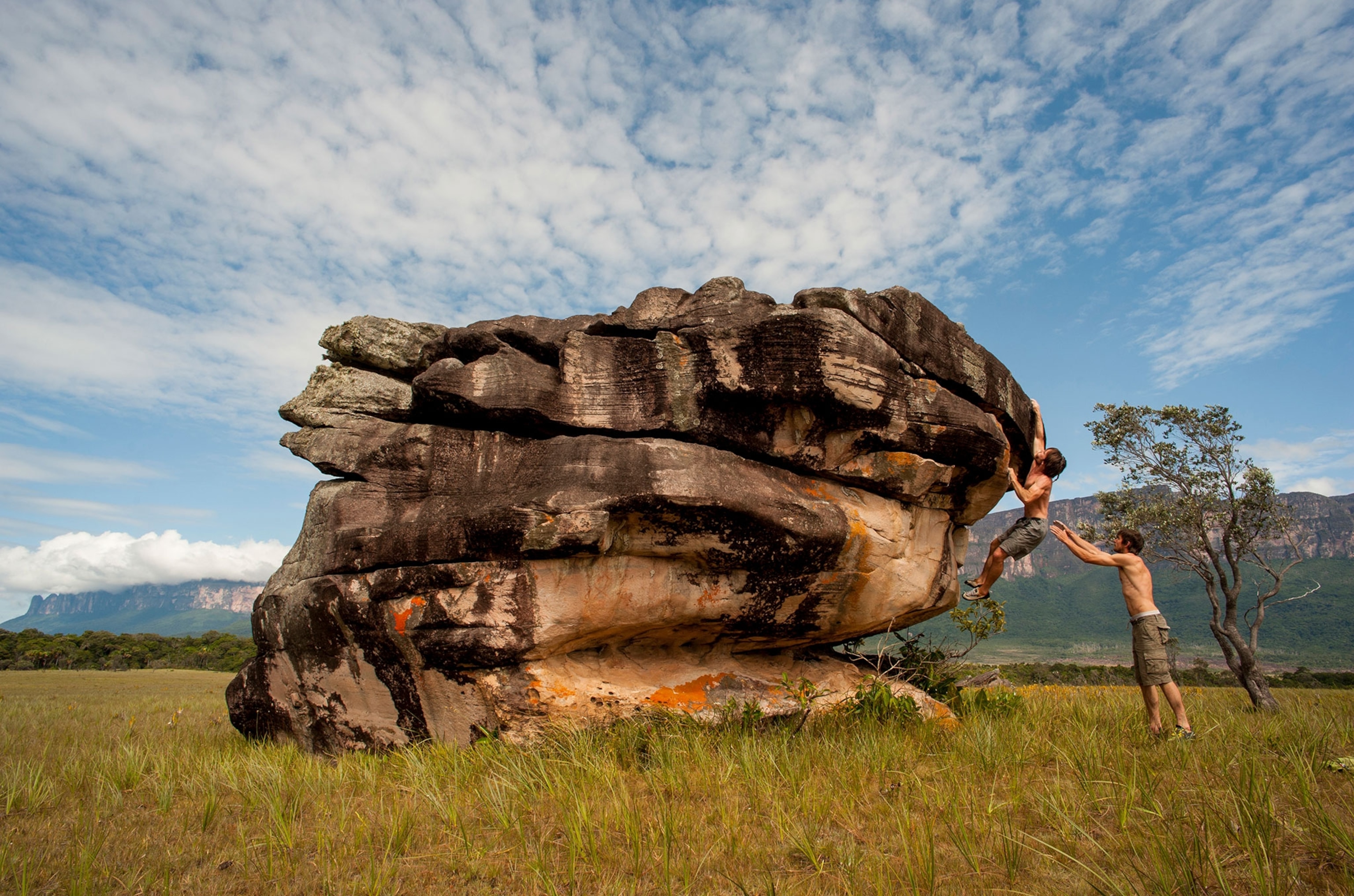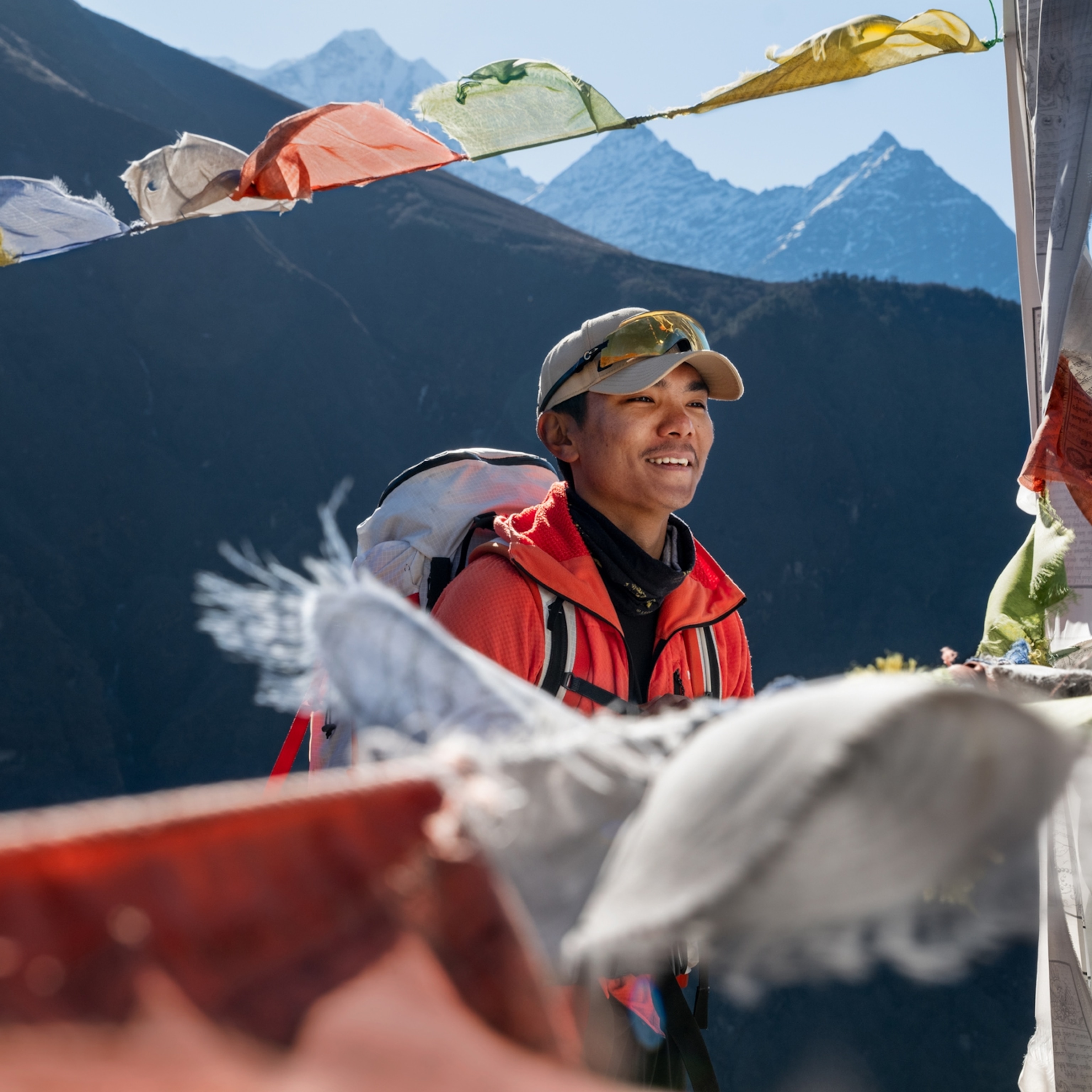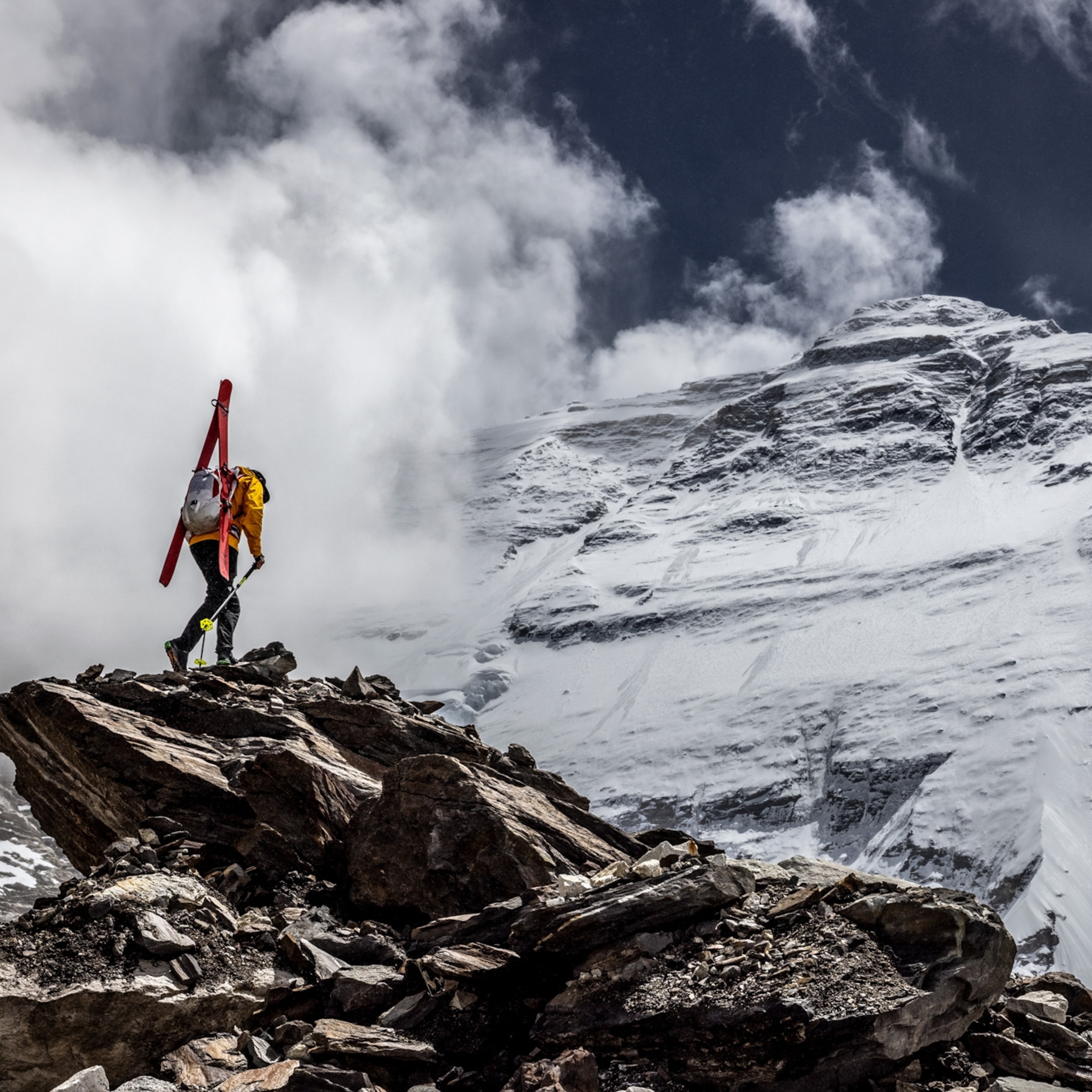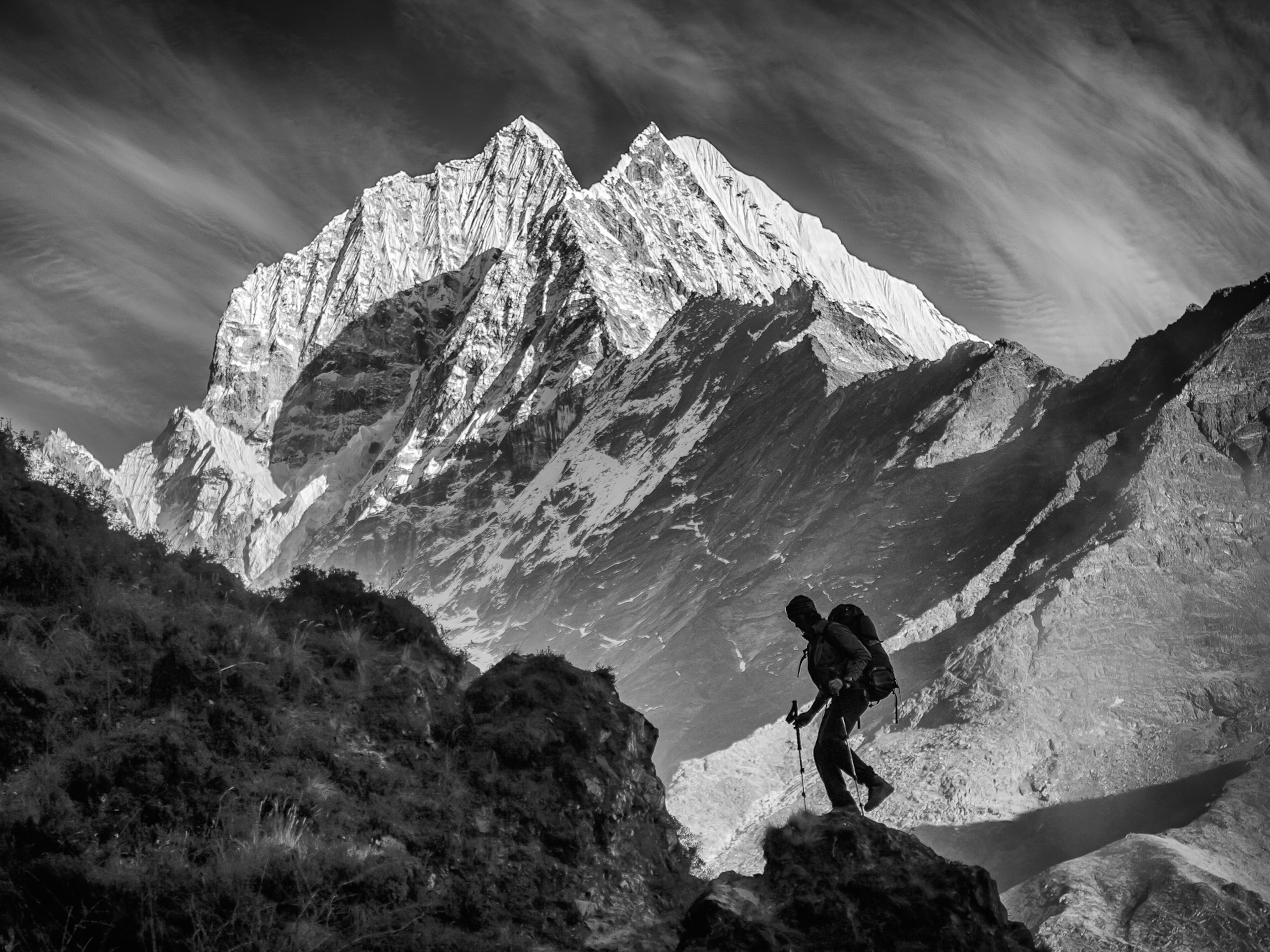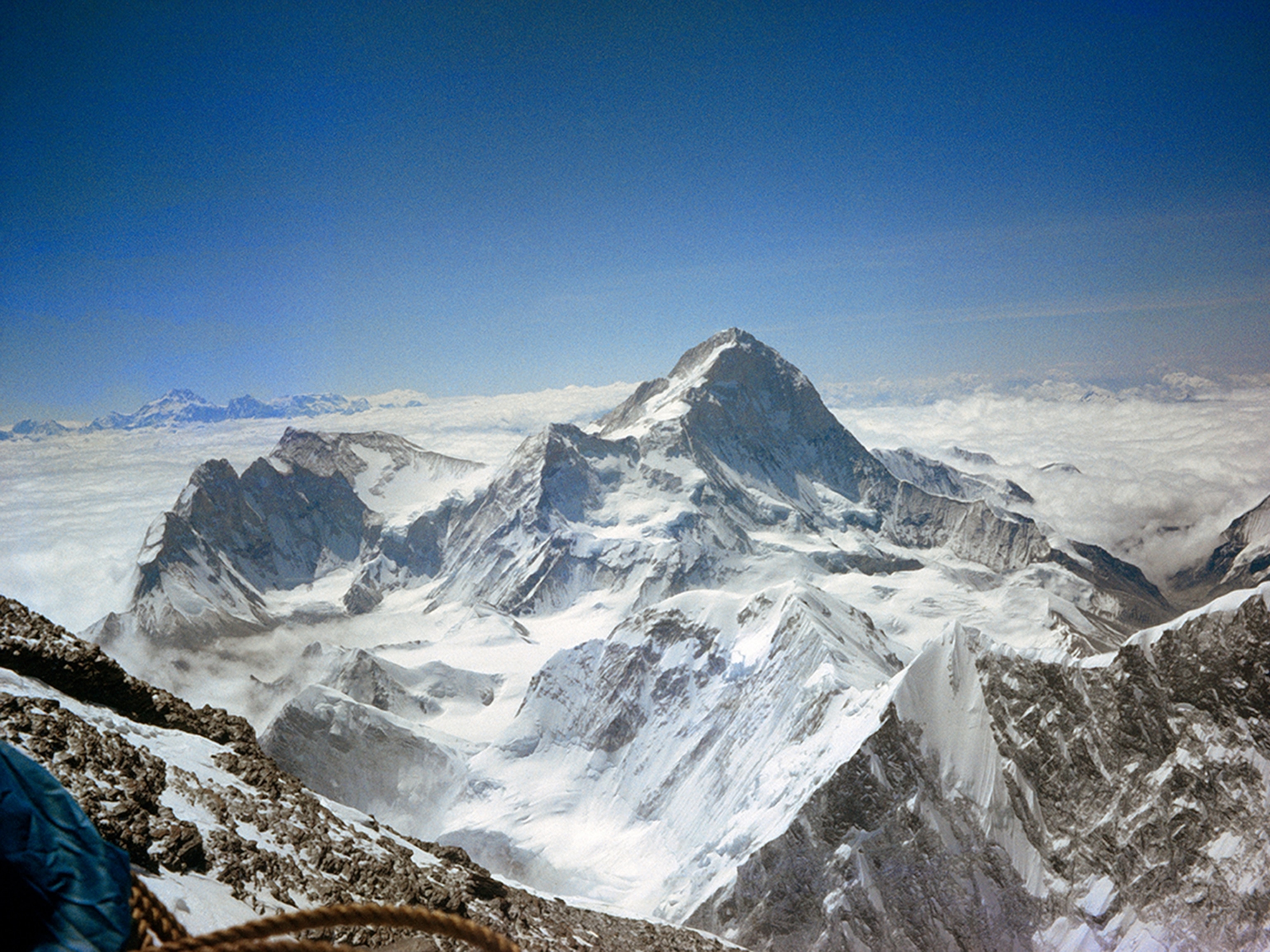Rock climbing: from ancient practice to Olympic sport
The sport of rock climbing is a lesson in how humans take an ancient activity and run with it.
Since modern recreational climbing began in the late 19th century, breakthroughs derived from new technology and tactics have pushed it in myriad directions.
Today, as international competitors at the highest echelons of the sport look forward to climbing’s debut in the 2020 Tokyo Olympics, thousands of new enthusiasts have been introduced to the sport thanks to the burgeoning indoor climbing gym industry. Meanwhile, ever growing numbers of elite climber-explorers continue to travel to the far ends of the earth in search of “untouched stone.”
To understand what everyone is really up to, it helps to get a grip on the history of climbing and the language that has evolved around it.
An ancient activity
There is ample evidence that ancient and pre-modern cultures across the globe found reasons to venture onto what today would be considered “technical terrain.” In Mustang, Nepal, archeologists discovered a complex series of burial caves that can only be reached by climbing the faces of imposing vertical cliffs. The American Southwest is riddled with evidence of native tribes living among the mesa cliffs of the region. Most ancient people probably climbed for safety.
Three places are credited as the birthplaces of modern recreational climbing: the Peak and Lake Districts of England, the Elbe Sandstone region of Southeastern Germany, and the Dolomites of Northern Italy. By the first decade of the 20th century, pioneers were experimenting with first-generation climbing inventions such as steel carabiners and soft iron ring pitons.
Aid versus free
Free climbing does not mean climbing without a rope. That would be free-soloing, the high-stakes activity made famous by Free Solo, the Oscar-winning film that documented the most famous free solo ever, Alex Honnold's no-rope ascent of Yosemite's El Capitan.
Rather, free climbing means the climber is simply trying to reach the top of his or her objective using only their physical bodies. Safety systems such as a rope or bouldering pad may be used in the event of a fall, but not to aid upward progress. In contrast, aid climbing means the climber uses a variety of technical gear to painstakingly pull themselves up the cliff.
Since climbing’s earliest days, climbers have squabbled over the intricacies of style related to that distinction. In 1911, noted German climber Paul Preuss published an essay in the German Alpine Journal in which he criticized leading climbers of the day for using pitons to pull themselves up sections of climbs they could not ascend with physical ability alone. “The piton is an emergency aid and not the basis of a system of mountaineering,” he wrote, sparking one of the community’s first grand debates over style.
Throughout the first decades of the 20th century, the techniques and knowledge developed in early hotspots slowly traveled throughout North America, Europe, and elsewhere. This early era culminated in the 1930s, when many watershed technical climbs were done across Europe and North America, from the first ascent of Ship Rock in New Mexico and Devils Tower in Wyoming, to the Walker Spur of the Grandes Jorasses in the French Alps.
Bouldering: the art of the movement
While most rock climbers were drawn to the biggest and most obvious challenges, a small subset of free climbers focused on mastering their athletic potential with smaller objectives.
Bouldering, climbing without a rope on small cliffs and boulders where it is possible to land relatively safely, first evolved on the boulders of Fontainbleau outside of Paris in the mid-century. Because bouldering allows the climber to practice intricate movements unencumbered by a rope or safety concerns, it is the premier venue for pushing the absolute limits of free climbing.
- National Geographic Expeditions
In the 1950 and 60s, an eccentric Air Force officer-cum-mathematician named John Gill living in Colorado Springs, Colorado, began to use basic gymnastics exercises and training principles to train for bouldering. He also used magnesium carbonate chalk favored by gymnasts to keep his hands from sweating while he climbed—both innovations that are universally embraced today.
The birth of big wall
The immense granite walls of Yosemite Valley, California, became the most important climbing testing ground of the post-World War II era. In the late 1940s, Swiss immigrant and master blacksmith John Salathé began to experiment with a new breed of pitons made of extremely hard steel that could be hammered into the thin cracks of Yosemite and then removed for further use without buckling. Salathé’s new designs, along with a host of other inventions including mechanical ascenders and specialized hammocks that could be anchored to a sheer cliff face, sparked the golden age of Yosemite climbing, in which many of the area’s most iconic cliffs, including Half Dome and El Capitan, were first ascended using aid climbing techniques.
The clean climbing revolution
For the first 70 years of technical climbing, the piton—a metal spike driven with a hammer into a crack in the rock— was the primary form of protection. In the 1972 edition of the Chouinard Equipment catalogue, Yvon Chouinard, Tom Frost, and Doug Robinson argued that the repetitive hammering of pitons into established climbing routes was destroying the resource. They advocated for the use of less invasive protection on both free and aid climbs—namely nuts and hexentrics, machined aluminum shapes that could be slotted into natural constrictions in cracks.
Bolts and sport climbing
Up until the 1970s, most free climbers felt it was cheating to hang on a rope to practice difficult moves over and over again, as one might do while bouldering. But during this influential decade, free climbers began to experiment with what was known at the time as hang-dogging—that is, rehearsing a sequence of difficult moves over and over again while resting on the rope between attempts in an effort to master the climb.
In the late 1970s, climbers near France’s Verdon Gorge, a spectacular feature sometimes compared to the Grand Canyon, began rappelling down from the top of otherwise unscalable cliffs to explore and pre-equip routes with permanent bolts before attempting to free climb them from the bottom. In the early 1980s, in Smith Rocks, Oregon, a local named Alan Watts began developing climbs using similar “top-down” tactics.
Hang-dogging and bolt-equipped climbs combined to create the discipline of sport climbing—climbing for the physical challenge of it on routes that have been engineered with in situ protection. In contrast, traditional climbing, a.k.a. “trad” climbing, refers to climbers who place and then remove their own protection as they go.
Climbing grades
Climbers use a highly technical system of grades to keep track of relative difficulty and rising standards in sport climbing, bouldering, trad climbing, and aid climbing.
In North America, bouldering grades begin with a V- prefix and currently range from V0 – V16; sport and traditional (“trad”) climbing grades begin with a 5 prefix and currently range from 5.0 – 5.15, and each of these grades can be further measured by adding a, b, c, or d with d signifying greater difficulty; and aid climbing grades begin with an A- prefix and run from A0 – A5. Additionally, trad climbs sometimes carry a risk rating, PG, R, or X, to denote the seriousness of the fall potential.
The gym craze
Going back at least as far as 1939, climbers occasionally found architectural facades suitable for practice—most notably at two universities, the University of Leeds in England and the University of Washington, where stone walls that were part of campus buildings began to serve as gathering spots for climbers. The first purpose-build indoor walls were introduced in the 1980s, and spread throughout Europe and North America by the mid-1990s. Climbing in these first-generation gyms was often a rough-hewn experience, with homemade walls and holds, dusty air due to poor air filtration systems, and the ubiquitous colored tape that was used to demarcate routes.
More recently, commercial indoor walls have come of age thanks to a growing industry of wall and hold manufacturers, professional route-setters, and more.
Olympics bound
From informal local events to an international World Cup series, climbing gyms nurtured the growth of competitive climbing as a legitimate organized sport. Early events like the 1988 International Sport Climbing Competition, held on a 110-foot outdoor wall on the side of a lodge at Snowbird, Utah, helped pave the way for the internationally recognized IFSC World Cup series and climbing’s eventual inclusion in the 2020 Olympics in Tokyo.
For climbing’s Olympic debut, competitors will compete in three disciplines: bouldering, lead sport climbing, and speed climbing, for one medal. In future Olympics, many athletes hope to see each discipline receive its own medal distinction.
Big wall redux
While competitive climbing represents how specialized climbing has become, the recent surge in big wall free climbing illustrates what’s possible by combining multiple disciplines.
Lead by American Tommy Caldwell and German brothers Alex and Thomas Huber, Yosemite Valley experienced a second golden age in the early 2000s. By applying fitness and tactics gained from elite sport climbing to traditional aid climbing routes up El Capitan and other walls, Caldwell, the Hubers, and others established a new wave of 5.13 and 5.14 big wall free routes that inspired new generations of free climbers to think about attempting bigger objectives than the average sport climb.
What’s most noteworthy is how quickly many of these lines have gone from test-piece challenges to seeing regular ascents. As Caldwell observes, “a lot of the new-school indoor climbing—with its big dynamic moves—actually translates pretty well to granite big walls, where the cruxes tend to be short stretches between holds or crack systems.”
Untouched stone
With approximately 450 commercial climbing gyms in the United States, and more opening up every month, climbing is uniquely posed among popular outdoor activities to find mainstream appeal. The sport’s recent growth has caused pressure on many popular outdoor areas, resulting in land-access issues that drive its more adventurous devotes to seek out new terrain.
Much of climbing’s future lies in the vast areas of the globe that have not been systematically explored by first-ascenders.
“You can’t just go out and discover another Mount Everest,” says climber and National Geographic explorer Mike Libecki, “but maybe some of the greatest bouldering fields or sport climbing crags or big walls are still out there. The mystery equals adventure.”


